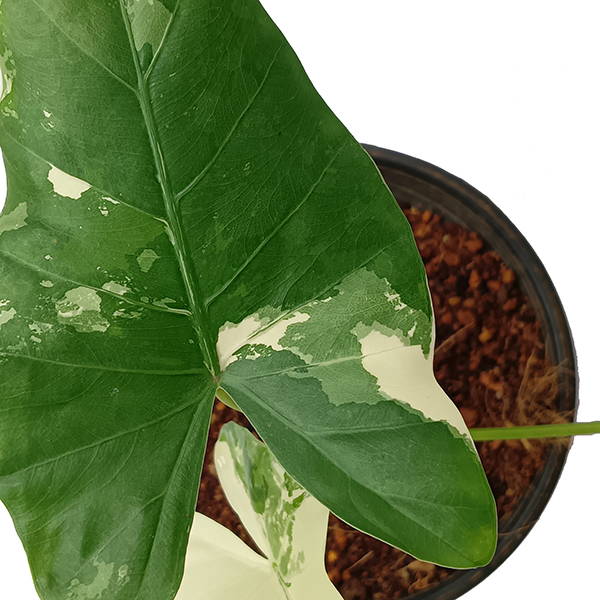
Common Name: Chinese Evergreen, Philippine Evergreen, Poison Dart Plant
Botanical Name: Aglaonema Commutatum
Are you looking for a houseplant that can tolerate almost any indoor condition? Ranking high on the “easy care houseplant” list, the aglaonema makes a perfect office plant because it tolerates low light, but also grows well in bright spots and tolerates fluorescent lighting. The chinese evergreen starts out small enough to fit on desks and tabletops, and will remain there for a while because it’s a slow-growing plant. However, over time it will get big and end up becoming a floor plant (and a good excuse for a bigger office!). You can easily propagate your aglaonema by root division when you re-pot. Keep in mind, the more color variety on the leaves, the more light it will need to retain its markings. Also, even though this plant tolerates a lot, it will thrive if exposed to medium to bright, indirect light. To really help this plant flourish, cut the flowers off as they siphon `growing power’ from the leaves to encourage more foliar growth.
Light
Green varieties of aglaonema can tolerate low light, but the colorful and variegated ones will maintain their luster in medium to bright, indirect sunlight. They should never be placed in direct sunlight. They can grow under fluorescent lighting, making them ideal for offices and interior low-light spaces.
Water
Water as needed in the growing season (spring through summer), and water less frequently in the winter. Chinese evergreens located in lower light areas should be watered less often; indoor plants placed in brighter spots will require more frequent watering. These plants don’t like being soggy, so wait until the top two inches of soil is dry, and then water thoroughly. Never let the roots sit in standing water; ensure the pot has proper drainage.
Soil
Chinese Evergreens love loose, nutrient-rich potting soil, like most other indoor plants. Use a soil medium that can retain moisture but also allows for draining excess water to avoid root rot. Most pre-mixed soils will suffice. Make sure that there is plenty of organic matter, like coco-coir, peat moss, or shredded leaves, and avoid soils that contain moisture retaining crystals. If your soil drains too quickly, we recommend re-potting your dieffenbachia into a compost-rich soil mixture, with less drainage materials. Learn how to create your own universal soil mixture for all of your indoor plants!
Temperature
Aglaonema houseplants prefer to live in temperatures of 60℉ and up. Keep them away from cold drafts, air conditioning, and heating vents as they’re cold-sensitive. Provide air circulation whenever possible as stagnant air can cause a wide array of problems like bacterial and fungal issues!
Humidity
Aglaonema potted plants can tolerate typical household humidity levels. If the tips of the leaves turn brown, it means the air is too dry, and you should increase the humidity with a humidifier. Trays filled with pebbles and water can also help increase the humidity immediately surrounding your plants, as can grouping your indoor plants closely together. Learn how to increase the humidity in the air around your indoor plants!
Fertilizer
Aglaonemas don’t require much food, so use a complete liquid fertilizer that is diluted to 1/4 the recommended strength, fish/seaweed emulsion, or slow-release fertilizer once or twice in the growing season (spring through summer). Learn when to fertilize your indoor plants in our in-depth video!
Growth Rate
Chinese Evergreens are slow to moderate growers. Most varieties can reach upwards of 3′ indoors, but it could take between 4-6 years depending on the indoor growing environment.
Pro Tips
Leave the lower browning leaves on the plant until you can pull them out by hand. This will help prevent any unwanted critters from invading the plant through wounds created by cutting the stems.
When going on vacation, place your chinese evergreen houseplants together with your other indoor plants in a low light area. They’ll use less water and the nearby plants will help keep the humidity higher.
Rotate your aglaonemas 90° (quarter turn) every week so they’ll maintain a well-rounded shape.





